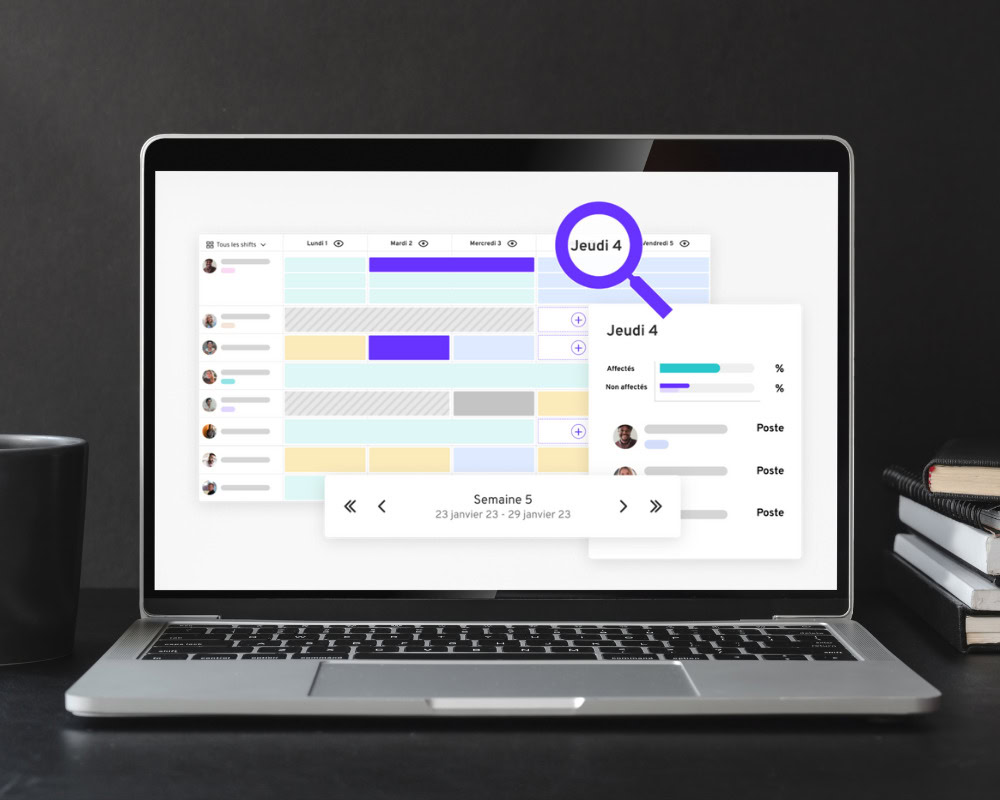Introduction
Why is Strategic Workforce Planning essential in 2023?
In a world where technology and market needs evolve rapidly, the Strategic Workforce Planning has become a necessity rather than an option. This is particularly true in the industrial sectorwhere skills required are constantly evolving and where the competition is significant. In 2023, with the growing impact of the digitalization and automationHaving the right plan in place is crucial to staying competitive.
What you'll find in this industrial guide
This guide provides you with a comprehensive overview of Strategic Workforce Planning, specifically tailored to the industrial sector. You will learn :
- Visit fundamentals Strategic Workforce Planning
- How to adapt these principles to the industrial sector
- Visit tools and technologies that can help you
- From tips practices and mistakes to avoid
I. The fundamentals of Strategic Workforce Planning
Definition and significance
Strategic Workforce Planning (SWP) is an integrated process aimed at aligning an organization's global business strategy with its strategic vision. human resources management. It's an agile approach that enables companies to respond effectively to changing market needs by adapting their manpower. Le Strategic Workforce Planning focuses on identifying skills required to achieve business objectives, and proposes solutions to bridge the gap between existing and required skills.
In the end, it's a strategic tool which aligns human resources realities with corporate strategy, ensuring that the two are in perfect harmony for long-term success. In the industrial sector, this means not only having enough staff, but also employees with the right skills. technical skills and the necessary certifications.
Objectives and benefits specific to the industrial sector
In the industrial sectorthe objectives of the Strategic Workforce Planning go beyond simple staffing. They include :
- Production line optimization Having the right people in the right jobs maximizes efficiency.
- Specialized skills management Identify and fill gaps in technical skills and certifications.
- Cost reduction Minimize training and hiring costs by planning ahead.
- Compliance and safety Ensuring that all employees meet industrial safety and compliance standards.
A good Strategic Workforce Planning to stay competitive in a constantly evolving sector, while at the same time optimizing your resources and minimizing risks.
II. Challenges facing the industrial sector
Complexity of skills required
Visit industrial sector is particularly demanding in terms of technical and specialist skills. Whether it's the maintenance of complex machines, the management of automated production lines or the compliance with safety standardsThe skills required go far beyond basic qualifications. This complexity makes Strategic Workforce Planning all the more crucial to ensure that you have the talent to meet these specific needs.
Managing human resources in a changing environment
Visit industrial sector is constantly evolving, with the introduction of new technologies and production methods. This dynamic environment makes human resources management particularly challenging. Visit Strategic Workforce Planning enables you to remain agile, helping you to adapt your workforce to rapid changes in technology and industry practices.
III. The Essential Pillars of Successful Strategic Workforce Planning
In-depth Industrial Ecosystem Diagnosis
The first crucial step in the Strategic Workforce Planning is to carry out an exhaustive diagnosis of your industrial environment. This includes a detailed skills analysis in place training needs and compliance obligations. The use of analysis tools of data Our advanced solutions, specially designed for your sector, will provide you with a precise, up-to-date view of your situation.
Anticipating Tomorrow's Skills and Talents
After having mapped of the situation, the importance lies in the projection of the future skills needs. Whether it's skills in advanced robotics artificial intelligence or supply chain optimization, rigorous planning is your best ally in anticipating these needs before they turn into insurmountable challenges.
Designing Innovative Industrial Strategies
With a clear understanding of present and future needs, the next step is to develop tailor-made strategies to meet them. This may involve targeted training and strategic acquisitions to acquire essential skills.
Deployment and Performance Measurement
The final phase is the deployment your strategic plan and monitor it in real time. The use of KPIs adapted to your industry is essential for evaluating the effectiveness of your plan. Regular adjustments, based on these measurements, will ensure that your company remains aligned with its long-term objectives.
By following these key steps, you'll not only maximize the effectiveness of your Strategic Workforce Planningbut also the competitiveness and sustainability of your business in a constantly changing industrial environment.
IV. Tools and Technologies for the Industrial Sector
Industry-specific software and platforms
In the industrial sectorthe efficiency of Strategic Workforce Planning depends to a large extent on tools and technologies used. Talent management platforms, human resources information systems and even specialized SaaS workforce planning software enable you to monitor, analyze and manage your manpower optimally.
Industrial KPIs to track
To measure the effectiveness of your Strategic Workforce PlanningIt's crucial to monitor industry-specific key performance indicators (KPIs). These include :
- Employee turnover rate
- Training costs per employee
- Rate of adoption of new technologies
- Production line efficiency
These KPIs will enable you to adjust your plan in real time and make data-driven decisions.
Industrial applications of the technology
Technology is playing an increasingly important role in the Strategic Workforce Planning industrial applications. Applications such as artificial intelligence for analysis predictive can revolutionize your approach to operational management.
V. Choosing the right partner for your Industrial Strategic Workforce Planning
Essential criteria for the industrial sector
The success of your Strategic Workforce Planning depends largely on the choosing the right partner. Here are some essential criteria to consider :
- Specialization in industry Make sure the partner has proven expertise in the industrial sector, and not just a general knowledge of the field.
- Customized technology solutions The partner must offer technological tools specifically adapted to the needs and challenges of the industry. These tools must be powerful and effective, with evidence to back them up.
- Case studies and testimonials : Look for partners who can present successful case studies or customer testimonials in the industrial sector, attesting to their competence and reliability.
Industry case studies and testimonials
Before making a decision, it's essential to consult case studies and testimonials that can give you an insight into the partner's effectiveness in similar contexts. Use cases are very important to analyze, you just need to analyze the results obtained with the tools. Here are a few examples:
VI. Mistakes to avoid in Industrial Strategic Workforce Planning
Lack of long-term vision
One of the most common mistakes in the Strategic Workforce Planning is to focus solely on the needs short-term. In the industrial sector, where technologies and production methods evolve rapidly, a vision of the future is essential. long-term is essential for anticipate future skills needs and in talents.
Ignore industry-specific data
Visit industrial sector is rich in data which can be operated for improve your planning. Ignoring this data can lead to errors of judgment and inefficiencies. Use data analysis tools to inform your planning and make fact-based decisions.
Common pitfalls and how to avoid them
Common pitfalls include a lack of flexibilityignorance of trends and the negligence of ongoing training needs. To avoid them, keep abreast of the latest trends, be flexible in your planning and invest in training and skills development.
Conclusion
Summary of key points for the industrial sector
For a successful Strategic Workforce Planning in the industrial sector, it is crucial to follow a methodical approach that includes data analysisthe selection of good partner and a vision of long term. This guide has provided you with the tools and knowledge you need to tackle this process effectively.
If you have any questions or would like to find out more about how the Strategic Workforce Planning can benefit your industrial business, please contact us for a free demo. We're here to help you optimize your workforce and achieve your goals.



